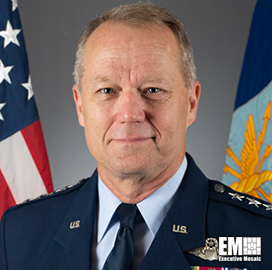The Center for Strategic and International Studies (CSIS) has released a report outlining several technologies and methods that the U.S. government can use to protect space systems from counterspace weapons and deter attacks in space.
CSIS said Thursday that the report categorized counterspace weapons into kinetic-physical, non-kinetic physical, electronic and cyber capabilities and described a range of active and passive defenses that can safeguard space systems and ground infrastructure from various threats.
Architectural, technical and operational are three categories of passive space defenses described in the report. Space- and terrestrial-based are the two categories of active space defenses discussed in the analysis.
“Among the architectural passive defenses explored in this study, one of the key takeaways is that distributed, diversified, and proliferated constellations can all be used in various combinations to complicate the targeting calculus of an adversary and reduce the benefits of attacking any single satellite,” the report reads.
Technical passive defenses, such as jam-resistant waveforms, antenna nulling and electromagnetic shielding, can make platforms more challenging to attack, while satellite maneuver, stealth, deception, decoys and other operational passive defenses can make satellites difficult to detect, monitor and target.
Space-based active defenses destroy or disrupt an adversary’s counterspace weapons to protect space platforms, while terrestrial-based defenses can be employed “to target counterspace weapons in space and the ground systems that control and operate these weapons," according to the analysis.
The report also offered several recommendations, such as prioritizing investments in space domain awareness capabilities, advancing the use of lasing systems, onboard jamming and other non-kinetic active defenses to prevent kinetic attacks against high-value satellites and considering new options to improve the Department of Defense’s integration with commercial space companies and better use existing space platforms for national security applications.
Todd Harrison, director of Defense Budget Analysis and director of the Aerospace Security Project at CSIS, co-wrote the report with Kaitlyn Johnson, deputy director and fellow of the Aerospace Security Project at CSIS, and Makena Young, a research associate with the center’s Aerospace Security Project.








